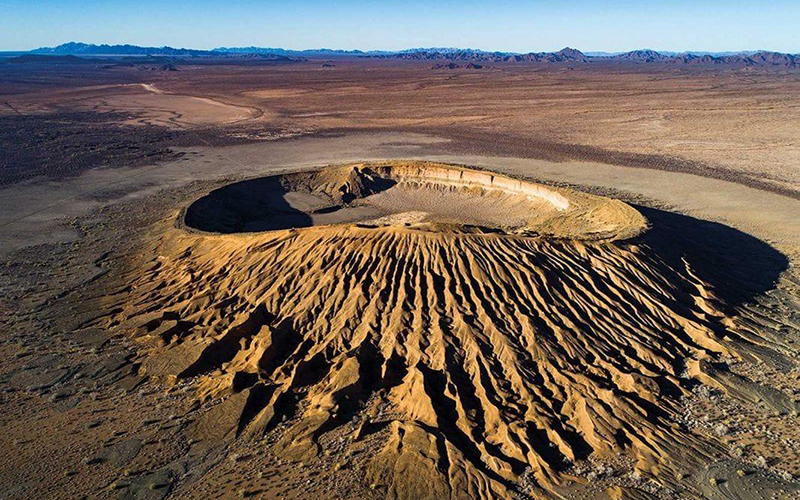
The UNESCO site consists of the dormant volcanic Pinacate Shield of black and red lava flows and desert pavements, and the Gran Altar Desert with its ever-changing sand dunes, which can reach a height of 650 feet. (Photo by Alejandro Olivera/Center for Biological Diversity)
HERMOSILLO, Mexico – Just south of the U.S. border, Sonora’s stunning 2,700-square-mile El Pinacate and Gran Desierto de Altar Biosphere Reserve is an otherworld landscape dotted with enormous craters, sand dunes and lava flows. In 2013, it was designated a UNESCO World Heritage site for its outstanding biodiversity, including such endemic species as the endangered Sonoran pronghorn.
But conservationists contend the Trump administration’s border wall construction near Organ Pipe Cactus National Monument poses a threat to Sonoran wildlife by preventing cross-border migration and habitat use, and it severs the route of a cross-border journey sacred to the Tohono O’odham people.
Last week, the Center for Biological Diversity, the Wildlands Network and Greenpeace Mexico, along with the Tohono O’odham Tribe, petitioned UNESCO to declare the reserve “in danger” because of wall construction just north of the heritage site.
“This is not just between the U.S. and Mexico. We’re talking about a World Heritage site,” said Alejandro Olivera, Mexico’s representative for the Center of Biological Diversity. “Other countries need to get involved. It is in their hands to raise their voice and stop this wall construction.”
This wasn’t the first petition sent to UNESCO concerning El Pinacate. In May 2017, the groups petitioned the World Heritage Committee to give El Pinacate “in danger” status because of U.S. plans to construct an impenetrable, 30-foot high wall along the U.S.-Mexico border, which stretches nearly 1,960 miles.
The United States now has begun construction of the border barrier in areas just north of El Pinacate, running along the southern edge of Organ Pipe Cactus National Monument and the Cabeza Prieta National Wildlife Refuge.
“The U.S. border wall is no longer merely a plan – the wall has already begun to divide the ecologically critical Sonoran habitat that El Pinacate was designated, in part, to protect,” the groups wrote in their Feb. 21 letter. “Urgent action is needed by the (World Heritage) Committee to consider and recommend measures to mitigate the wall’s impacts on El Pinacate.”
Olivera added that the committee could consider providing “in danger” status as soon as this summer. In the meantime, the Tucson-based Center For Biological Diversity also is suing the government to halt further wall construction.